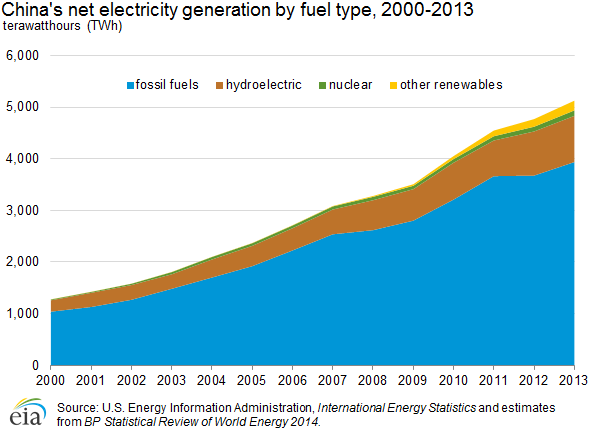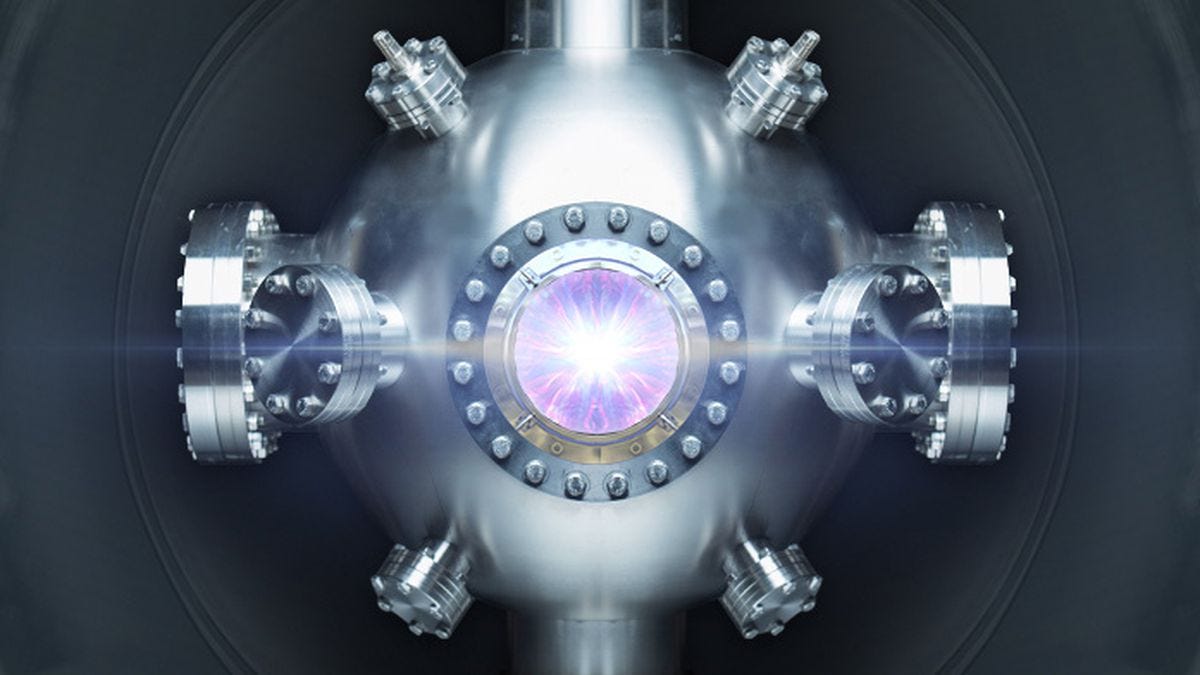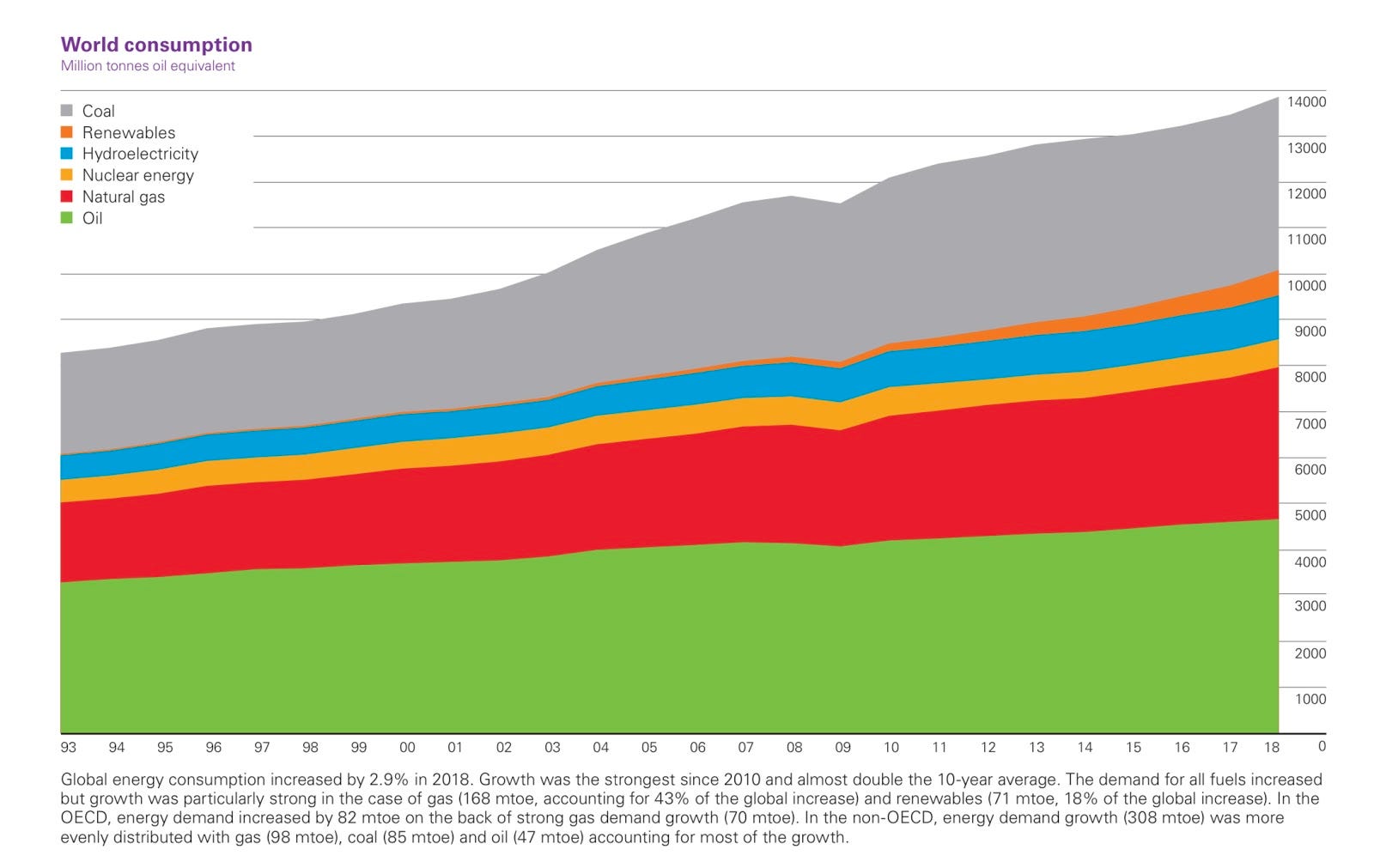How to Save the Planet
Published originally to Medium
Four points on transitioning to sustainable energy
The classical model of reducing civilizations’ impact on the environment goes as follows:
We need to completely transition from fossil fuels to renewables like solar and wind, all while using less energy. Spread the Love!
While these goals are certainly amiable, there is clear evidence that civilization will use significantly more energy, not less. While renewable generation is becoming increasingly affordable, there are challenges regarding energy storage, and industrial heat generation that today are currently not addressed:
The state of America today:
You can see that society relies extensively on non-renewable based energy generation. Solar and Wind represent a tiny fraction, especially when it comes to transportation and industrial energy consumption.
What is even more interesting, is that 67.5% of all energy consumed in the United Stated is “rejected”, or wasted, primarily as heat. That means that more than half of all energy generated in the United States goes to waste.
It is my theory that the extent to which a civilization can expand is directly linked to its utilization of energy and information (more on information in another article). The Roman Empire operated on firewood, sending ships all over the Mediterranean to fell trees. The British empire was powered by coal. Today we live in a world run by oil, paid for by The Petroleum-Dollar.
While I agree we need to transition away from petrochemicals, this is clearly not going to happen until we have a better alternative. It is my argument that we need to do four things to save the planet, and thus develop an energy supply chain that will significantly reduce geopolitical conflict.
- Reduce the impact of Fossil Fuels
- Master Energy Storage
- Go Nuclear
- Invest in Fusion
Reduce the impact of Fossil Fuels
While we can scream and moan on the terrors of petrochemical energy generation, the state of civilization is that a vast majority of our energy comes from the ground, and consumption is accelerating.

What we can do now is work to reduce the impact of fossil fuels, and work hard to incentivize something better.
One of the most effective ways to reduce the impact of fossil fuels is to incentives the international adoption of carbon capture and carbon credits. New technologies, for example capturing 100% of the carbon generated from natural gas generation, can create net zero carbon emissions without massively changing existing infrastructure.
Carbon capture technologies must be incentivized by the Government, and cannot operate profitably today on their own. For example. It was government backed emissions credits, and loans that allowed Tesla to survive in its initial stages. Government subsidies of carbon capture will incentivize new technologies, and enable civilization to expand beyond the Era of Oil.
While carbon credits and capture help reduce the global carbon footprint, if you have ever driven through Beijing or Delhi, you know very well that burning a fuels is not sustainable.

Master Energy Storage
Solar and wind has become cheaper than fossil fuel for electrical generation, yet critical issues remain when it comes to balancing the grid.

Grid balancing is matching supply and demand for when we need it most. When this goes wrong, the lights go out (something very common if you’ve ever lived in India). While Solar and wind cost less per MWh during peak generation, we humans use most energy In the mornings and at night. We humans are not very good at storing energy, and most solutions like Batteries remain expensive.
In order for renewables to replace petrochemical energy generation, we need to master energy storage, whether hydroelectric or battery banks. The good news is that this is happening:

In addition, countries like India need to rapidly develop domestic supply chains, and tax incentives for domestic production of batteries. Today the supply chain for lithium battery production are centralized between one factory in Nevada (Tesla Gigafactory), and China.
Build Nuclear Reactors
What is clear is that civilizations’ demand for energy is never going to wane. To say “simply use less energy” is to tell the next 10 billion people on Earth to never own a car or a washing machine, and to wash dishes by hand. This is never going to happen, and is offensive to the billions of people working every day who simply aspire to attain a higher standard of living.
Our standard of living requires electricity, and if we do not change things rapidly, this standard of living for the next 10 Billion people will be powered by Coal, Oil, and Natural Gas.
Nuclear reactors have reached the point many years ago that they have become passively safe (meaning if the power goes out they use convection and heat dissipation to passively shut down, instead of exploding). Modern reactors can even generate more fuel than they burn (a concept quite counterintuitive, called a breeder reactor).
Let’s look at this one more time: Civilization has the means to create energy with methods that generate more fuel than they consume; And we aren’t using it.
Think about that for a moment.
New technologies like molten salt reactors are far more efficient in regards to thermal cycles and produce exponentially less waste. Some chemistries (like thorium based molten salt reactors) even make it very difficult to convert reactor fuel into weapons grade materials.
There remains tremendous uncertainty and political issues surrounding nuclear power, primarily due to proliferation concerns and historical accidents. What is clear is that we need to replace our current fleet of reactors, many being General Electric Boiling Water Reactors, of the same make that blew up in Japan.
We have the technology to build safe, effective nuclear power that can completely replace our dependence on oil, and address waste and proliferation concerns.
It is unclear if a transition from fossil fuels can be made with solar and wind alone. I would argue that a transition to renewables alone is unfeasible anytime soon due to the nascent energy storage supply chains and high costs; This is especially so in places like India and China where demand for energy is increasing exponentially, or even in California where a vast majority of energy comes from natural gas.
What’s Next

It is clear that it’s going to take a moonshot to keep much of Earths’ megacities ending up like Delhi or Beijing. In my opinion the answer requires something crazy, something risky, something like fusion. Our world is filled with exponential regressions, for example computing power, or cost of Solar, or the speed of human craft. These technologies not only get better over time, but they get exponentially better.
A great example of this is our ability to make superconducting materials that operate at high temperatures (a critical component to nuclear fusion). The same technology that will enable us to build fusion reactors is not only getting better, but is getting exponentially better:
Timeline of Superconductivity:

Groups such as MIT’s Commonwealth Fusion Systems , Lockheed Martin Skunkworks Fusion Project, and so many others are making tremendous progress in the space. It is my perspective that we need to accelerate.
So I agree with environmentalists, the Elon Musks of the world, let’s look up to the sun, but not as a source of solar energy, but as proof that fusion can be done.




